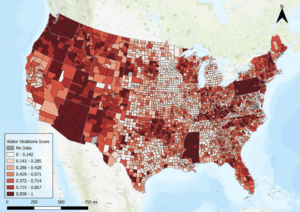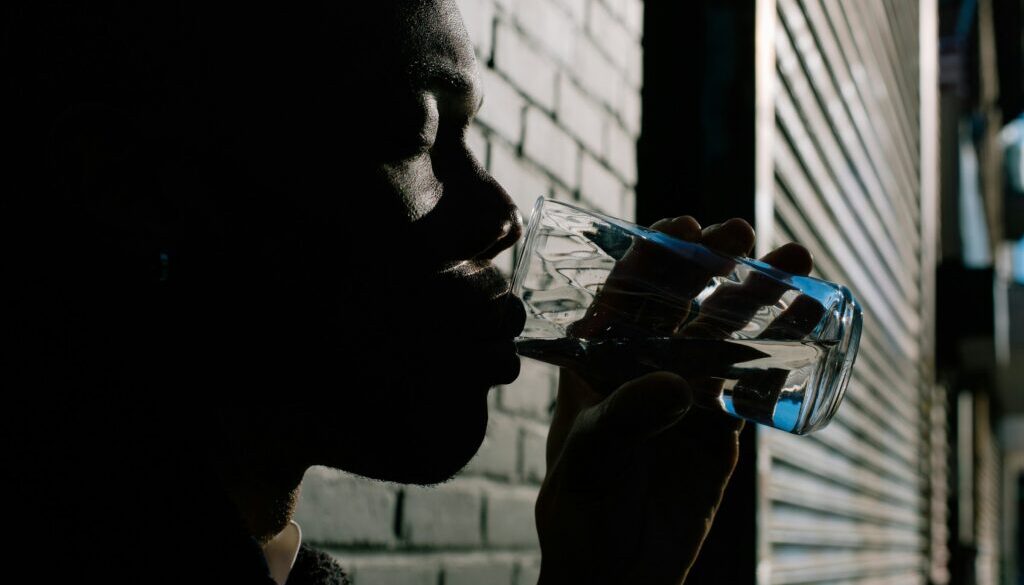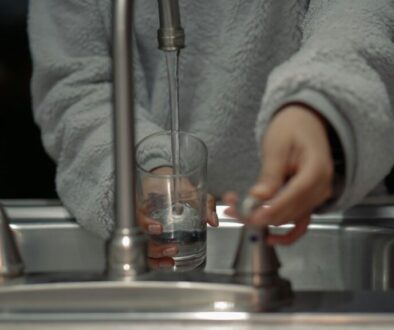Study reveals US hotspots for poor water quality and “water injustice”
By Douglas Main
New research has identified hotspots in the US with concerning levels of water quality and poor access to clean drinking water, revealing that Mississippi, Pennsylvania, Arizona, and Washington had the most water quality violations across the board.
The paper, published Tuesday in the journal Risk Analysis, also developed county-level scores across most of the country for unequal access to safe and clean drinking water, finding that eight of the 10 counties with the worst “water injustice” scores were in Mississippi, with the other two in Texas and South Dakota. Water injustice tends to disproportionately impact low-income households and people of color.
The top 10 counties with the most water violations were located in West Virginia, Pennsylvania, North Carolina, and Oklahoma.
“You can see some pretty stark differences between states,” said study lead author Alex Segrè Cohen, a social scientist at the University of Oregon. In Arizona, Mississippi, and Pennsylvania, “almost every county has high water violation scores,” she said.

The study also noted that 2 million people in the US lack access to running water or indoor plumbing in their homes. Many of these communities are found on the US-Mexico border, or on tribal land. Another 30 million live “where water systems operate unsafely.”
The findings add to other recent work on water quality in the US, including a trove of data made public in February by the Environmental Working Group (EWG) in their tap water database, which shows widespread pollution of US tap water with more than 320 chemical contaminants, including industrial chemicals and farm-related pollutants.
In the new study, the researchers quantified “water injustice” by looking at violations reported to the US Environmental Protection (EPA), which they combined with measures of a community’s social vulnerability taken from the US Centers for Disease Control and Prevention (CDC)’s Environmental Justice Index. Social vulnerability refers to “demographic and socioeconomic factors, such as poverty, lack of access to transportation, and crowded housing,” which affect how people response to hazards and stressors, according to the CDC.
This paper is the first to combine data from the EPA with hand-coded data from Native American reservations, said the authors. It found that the average Native American water system had 1.6 violations per year, compared to 1.3 for the average private water system, and 0.6 for the average system owned by local governments.

Tribal systems only account for 1.3% of the water infrastructure in the US, according to the researchers, but they account for 3% of water violations. Indigenous people in the United States are 19 times more likely to lack access to indoor plumbing and sanitation in their homes than less marginalized populations, the study reported.
The paper does not support that argument, advanced by some, that privatizing water systems necessarily leads to better quality or fewer violations, according to the authors. Nor does it claim that governmental ownership is better; Hotspots of water injustice were frequently found in areas with lower private system ownership.
The CDC’s Environmental Justice Index, without which the data analysis for this study would have been impossible, was taken offline by the Trump administration earlier this year. It was put back online following a court order on February 11, but the page now bears language at the top saying that “this page does not reflect biological reality and therefore the Administration and this Department rejects it.”
Segrè Cohen said that having access to this kind of data is vital and allows for studies like this one to exist. “It’s hard to come up with solutions without knowing where and what the problems are… without high quality data,” she said.
(Featured image by Lia Bekyan for Unsplash.)
 EWG
EWG


